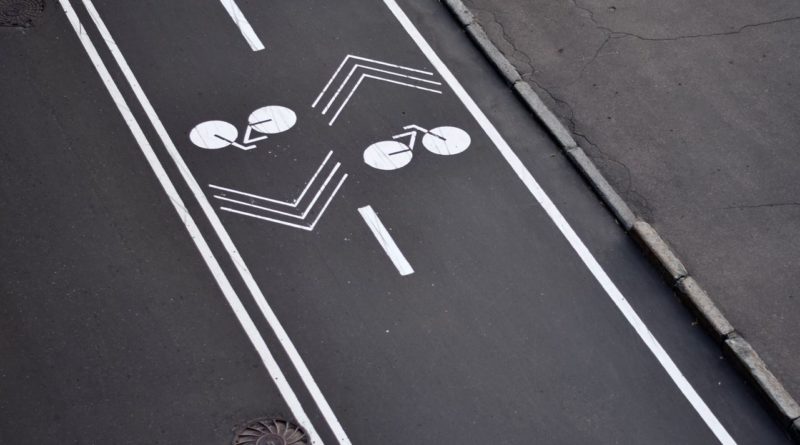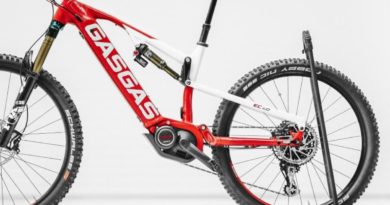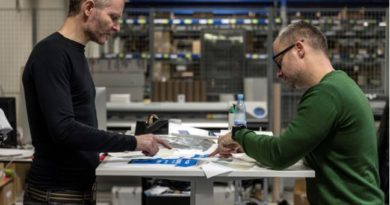Cycling in Scotland: Is infrastructure roll out a “postcode lottery”?
Active Freeways are a simple vision, on the face of it: to provide safe cycling within the towns and cities of Scotland with a network of high-quality protected cycle routes, linking the places people live and work by bicycle. It’s an ambitious ask, but what does it really mean – and importantly, when will it happen? Laura Laker finds out…
While much of Scotland is rural, around 70% live in towns and cities, with more than 70% of all journeys in Glasgow, Edinburgh, Aberdeen and Dundee – and 54% of all Scotland’s trips – less than three miles. However, cycling levels across Scotland are low – just 1% of journeys.
The pandemic saw rapid cycling increases of up to 80% in Scotland, with Clyde St in Glasgow seeing 199% growth, and Kingseat Rd, Dunfermline, 132%.
Active Freeways were a campaign ask for Sustrans Scotland at the 2021 elections, and an announcement is expected later in this Parliament. Claire Daly, head of policy and communications at Sustrans Scotland, said: “We are not currently aware of priority routes identified but we would anticipate that these would be identified by and delivered with local authorities.”
She adds: “We welcome and look forward to the detail on Active Freeways. We believe Scotland can hugely benefit from a high-quality active travel network connecting people to where they live, work, shop and socialise, as well as connecting neighbourhoods through radial and arterial routes. Those radial routes are particularly important, with different living and working patterns. We’ll be happy to work with Transport Scotland and local authority partners to support them on identifying routes and, when the time is right, on supporting delivery.”
Transport Scotland says Active Freeways are in the “early stages of development”, where they look at how to build a workforce and the skills to deliver them, adding “it is currently too early to say” when routes will be identified, and that consultation will be key to delivery. High-demand corridors in large urban areas will be prioritised, with long-distance active travel networks developed to connect cities and regions, along with rural connections.
Keith Irving, Cycling Scotland’s Chief Executive, said while the detail hasn’t yet been announced, such a network is “absolutely essential” to cycling growth in the region.
He reveals: “Scotland is in the early stages of a cycling revolution with a fantastic commitment to spending at least £320 million or 10% of the transport budget on active travel by 2024/25. Policy, strategy and guidance documents are largely in place and the long-term commitment to infrastructure like active freeways, is absolutely essential. This encompasses a network of cycle lanes, separated from traffic, in more urban areas to improved cycling routes in more rural areas. Every journey cycled helps our move to Net Zero.”
Scottish people also support such a move. In one online survey on the future of transport, improving safe cycling infrastructure was the top priority for more than 50% of respondents. Sustrans’ recent Walking and Cycling Index found similar: in a representative sample of 9,600 urban Scots, conducted by NatCen, found 55% of people want more government spending on walking, cycling and wheeling.
Lee Craigie, Scotland’s former Active Nation Commissioner, recently published her final report. Her first priority, a year in, was to advocate for a “national network of traffic-free paths connecting towns, villages and countryside”, with Active Freeways their longer-distance iterations. She said further action is needed to embed active travel into transport decisions and to develop the National Cycle Network “on a national scale”.
A report on Active Freeways by transport alliance, Transform Scotland, Putting Down Routes, says “to enable the carbon reductions in transport that Scotland must achieve, this network must be built as a matter of urgency”. It recommends unifying existing routes, including the National Cycle Network and appropriate local paths under consistent signage and branding “analogous to the roads programme”, with urgency and commitment, as well as funding.
Transform Scotland argues the current programme lacks network-wide strategic planning, or interventions for rural areas. What’s more, it notes, previous targets for 10% of all trips in Scotland by bike by 2020 were missed by a long way (it’s still 1%). It’s perhaps telling Scotland’s route map to cut car journeys by 20% by 2030 mentions Active Freeways twice, with an investment target of £50m – less than 2% of the transport budget. With a 75% emissions reduction target for 2030 (heading for net zero by 2045) and transport 35.6% of Scottish emissions, tackling how people get around is urgent, the report argues.
In March Scotland’s Active Travel Minister, Patrick Harvie, warned while “all political parties in this chamber went into the last election with significant commitments on active travel in their manifestos.
“Sadly, however, too often that support, at both national and local levels, can disappear when it comes to projects on the ground. It is not enough to support active travel in principle and then to stand in the way of project after project happening. Too often, what we see is delay, dilution and disruption, and even sometimes the opportunism of those who complain about an imaginary war on motorists.”
Pedal on Parliament is a campaign to secure cycling pledges from candidates during Scottish parliamentary elections. Campaigner Sally Hinchcliffe feels Active Freeways lack sufficient promotion or a tangible vision, while the name risks making cycling seem out of reach for some.
“This is what we need: high volume routes concentrating on areas of transport poverty but to call them active freeways gives a weird impression,” she says, adding Scotland needs to learn from London and rebrand the routes to appear more accessible.
Hinchcliffe says spending on cycle infrastructure “has been a postcode lottery”, with Glasgow rolling out volumes of high-quality infrastructure and Edinburgh’s progress stalled thanks to earlier legal challenges, adding things may continue that way. “Aberdeen might try and build another bypass, Edinburgh will spend it all on lawyers, and Glasgow will get on with it.”
Similarly, she says, some councils are far better placed to deliver a ramped-up cycling programme than others. “The increase in funding is massively backloaded over the four years. At the end of the final year there’s a danger they will be an enormous wodge of cash chucked at councils which have no capacity to spend it. The end result will be the money doesn’t get spent or the councils that are best equipped to spend it will get it: basically Glasgow.
A Transport Scotland spokesperson said: “Active Freeways is a new concept for Scotland and there will invariably be some initial challenges as the programme develops. Critical to the programme’s success will be engagement with stakeholders and users in how the initial design and development of the first phases are rolled out”.
In other news, Cycling in Scotland is fairing better off the roads, with tenders out for bike park creation. For the Scottish bike industry there is also hope of a manufacturing comeback.



